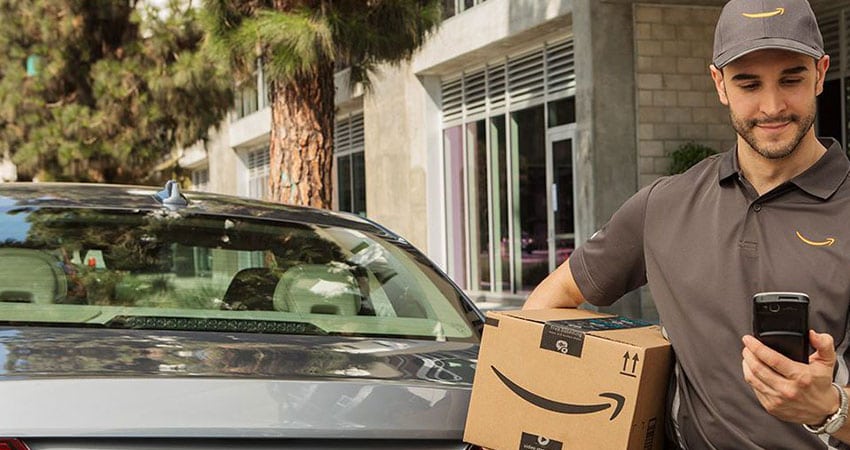Building off its Amazon Key offering last fall that lets couriers open smart locks and enter homes to drop off orders, Amazon is now enabling deliveries to the trunks of late-model GM and Volvo vehicles, the company announced.
Amazon said in-car delivery is available to Prime members in 37 U.S. cities, with more coming online soon, at no extra cost, using the Amazon Key app. Tens of millions of items are eligible via same-day, two-day and standard shipping.
The service only works with GM and Volvo vehicles from 2015 or later that use the manufacturers’ respective navigation systems (OnStar and On Call).
The idea from Amazon once again is getting to the ultimate frictionless experience, while avoiding the scourge of porch pirates who follow delivery vehicles around neighborhoods and snatch ecommerce packages left unattended at homes. There are no stats on the frequency of the modern-day crime of opportunity but plenty of anecdotal evidence.
Customers check their Amazon Key app to make sure they’re parked within range of the delivery location. They get notifications of their four-hour window, when their courier is on the way and when the package has been delivered. They can also track when their car was unlocked and relocked in the app and rate the experience.
In-car deliveries can’t happen in gated communities or in underground garages that kill satellite signals to the navigation systems. For those concerned about becoming a target by having a valuable item left in their trunk, Amazon said it will pay for broken windows and locks as the result of a delivery.
“If the damage is caused by a delivery and a customer calls, we will make sure it’s right,” Rohit Shrivastava, general manager of Amazon Key, told the New York Times.
Tushar Patel, CMO of Kibo, said his company’s recent research showed that 76% of shoppers say their purchasing decisions are influenced by having multiple fulfillment options, with Amazon ahead of the curve in that department.
“Time will tell whether or not Prime members will take a liking to the idea of giving car access to an unknown Amazon employee, but this new fulfillment choice certainly changes the narrative when we talk about raising the bar for omnichannel fulfillment and delivery,” Patel said.
The same misgivings and “creep factor” were cited by observers when Amazon introduced the Key app for in-home deliveries last October. A very similar service was introduced weeks earlier by rival Walmart for grocery deliveries.

